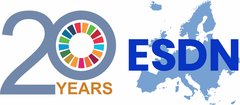INDICATIORS
Tuesday, 18 August 2020
All the ministries were involved in the process of defining the set of indicators for Slovenian Development Strategy 2030, which was led by the Governmental Office for Development and European Cohesion Policy, Ministry of Finance and Institute for Macroeconomic Analysis and Development. The Statistical Office of the Republic of Slovenia also participated. The performance indicators will be under review for possible change, update, and further development if needed.
Through the process of preparing the Slovenian Development Strategy 2030 that defines five strategic orientations for achieving the primary objective (»High quality of life for all«) and 12 development goals, key and performance indicators have been defined. Since the 2030 Agenda and the SDGs are embedded in the Slovenian Development Strategy 2030, this set of indicators is relevant also for the monitoring of Slovenian performance on 2030 Agenda.
Two to three main performance indicators are defined for each of the 12 development goals in the Strategy, with input and target values that represent the desired target values. In its annual development report, which includes a broad range of other development indicators in addition to the indicators defined in the Strategy for purposes of analysis, the Institute of Macroeconomic Analysis and Development monitors the achievement of the goals set out in the Slovenian Development Strategy 2030. When feasible, and where the data allow it, the indicators are monitored and analysed separately by sex, age group, and statistical region.
The Institute of Macroeconomic Analysis and Development (IMAD) monitors the achievement of the goals set out in the Slovenian Development Strategy 2030 and reports on them through the annual development report, which includes a broad range of other development indicators. The Government Office for Development and European Cohesion Policy monitors the SDG indicators globally through the VNR.
The Development Report is a document monitoring the implementation of the Slovenian Development Strategy. It is annually prepared by the Institute of Macroeconomic Analysis and Development and adopted by the Government of the Republic of Slovenia. The 2018 Development Report presents the baselines for monitoring the realisation of the Slovenian Development Strategy 2030 (SDS), adopted by the government of the Republic of Slovenia on 7 December 2017. The basic structure of the report follows the following five strategic orientations defined in the SDS: (i) a highly productive economy that creates added value for all; (ii) learning for and through life; (iii) an inclusive, healthy, safe and responsible society; (iv) a well-preserved natural environment; and (v) high levels of cooperation, competence and governance efficiency. The SDS also determined twelve development goals in mutually connected and interdependent areas that are deemed essential for the implementation of the strategic orientations. The report tracks the implementation of each development goal within the strategic orientation (sub-sections of the report) with which the content of the goal is most strongly linked (see Slovenian Development Strategy 2030, Figure 6), although each individual goal can contribute to the implementation of several strategic orientations. The appendix to the report presents indicators for monitoring the implementation of the SDS in more detail.
The recent Development report 2019 recognizes positive developments in the last few years: Since 2016 Slovenia has again been narrowing its gap in economic development with the EU average, social inclusion of the population remains relatively high, while the efficiency of energy and resource consumption has improved somewhat. However, in certain areas developments deviate from the principles of sustainable development and pose a risk to the achievement of the SDS’ primary objective. Key development challenges: Productivity growth, which is essential for raising the living standard of the population over the long term, has remained modest during the economic upturn. Developments in the field of innovations – which are the most important factor of long-term productivity growth – have been negative. Social protection systems are insufficiently adapted to demographic change, which increases pressures on their financial sustainability and limits the possibilities for ensuring high-quality public services for the population. From the perspective of creating an inclusive society, particularly the persistently high labour market segmentation of young people and the low economic and social inclusion of older people stand out as problematic. Progress in healthy life expectancy is relatively slow, the main challenges being the shortening of waiting periods in healthcare and a further improvement in the lifestyles of the population. From the environmental point of view, the sustainability of development is negatively marked by Slovenia’s high carbon footprint, particularly the rising GHG emissions from transport, the share of renewable energy sources remaining unchanged for several years, and unsustainable use of land.
According to the 2019 Development report, in previous years Slovenia has been relatively successful in solving short-term problems related mainly to the consequences of the crisis, but in the future more permanent measures for improving the long-term sustainability of development and quality of life will be required. Development policies should be focused primarily on the following:
- Acceleration of productivity growth,
- Adjustment to demographic change,
- Transition to a low-carbon circular economy, and
Strengthening the development role of the government and its institutions.
Goal 8:
4.1 Resource productivity
4.2 Energy efficiency
4.3 Share of renewable energy sources
4.4 Emission productivity
4.5 Modal split of transport
4.6 Waste
4.7 Environmental taxes
Goal 9:
4.8 Ecological footprint
4.9 Utilised agricultural area
4.10 Agricultural intensity
4.11 Intensity of tree felling
4.12 Quality of watercourses
4.13 Air quality
4.14 Functionally derelict areas
